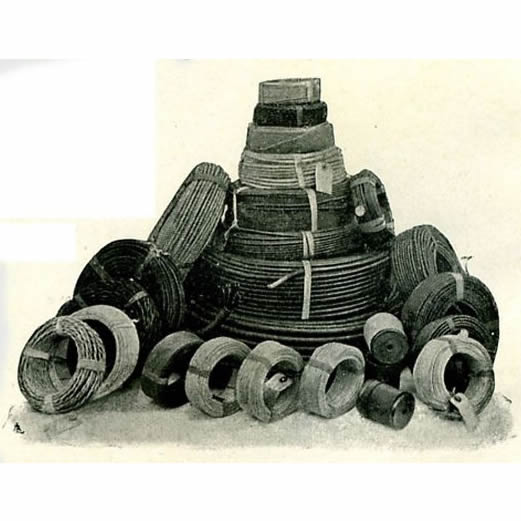
Pirelli cables are telecommunication cables, specially built to be laid down on the bottom of the sea, a lake, or a river. Their use is finalized at the transport – between the two banks – of information on a section of the data transport network.
Insights
Thanks to the tight interplay between research and practical applications, the marine telegraph sector was the first scientific-industrial complex. For this reason, only large corporations had the
technical and organizational resources for operating in that market. Giovan Battista Pirelli (1848-1932) also worked in this area, and in the 1880s he conceived the idea of tackling foreign industries also in this market.
Aware of the difficulties and risks he was facing by taking on such a complex task, in November 1885 Pirelli signed two agreements with the Italian government in Rome. By signing the first agreement, he was obliged to build and lay 12 submarine cables between mainland Italy and the Italian islands, for a total length of about 800 km. He was also responsible for maintaining that
infrastructure for 20 years. With the second agreement, he was obliged to have built, at his own expense, a ship capable of carrying and laying at least 400 tons of cables.
For the construction of submarine cables, Pirelli built a specialized plant on the sea banks near La Spezia. In fact, the main plant in Milan, which was responsible for the production of electrical conductors, could only manufacture cores isolated in gutta-percha.
The coils transported by the cable laying ship built by Pirelli, which was named “Città di Milano” - a reference to Milan - had a diameter of about 7 meters and were able to contain about 400 km of thinner type cable. This cable had an external diameter of about 20 mm and a weight of about 1 kg per meter.
Technical Data Sheet
Categoria: Telecommunications
Designer: Giovanni Battista Pirelli
Manufacturer: Pirelli
Year of production: 1897
Dimensionsdiameter 20mm, length 800km
Materialscopper, gutta-percha, steel






